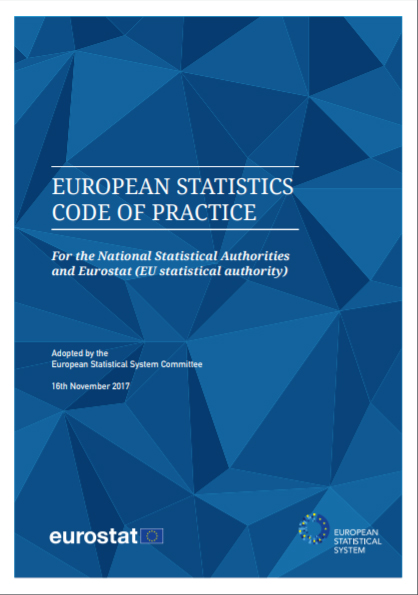European Statistics Code of Practice
EUROPEAN STATISTICS CODE OF PRACTICE
16th November 2017
The European Statistics Code of Practice is the cornerstone of the common quality framework of the European Statistical System. It is a self-regulatory instrument and is based on 16 Principles covering the institutional environment, statistical processes and statistical outputs. A set of indicators of best practices and standards for each of the Principles provides guidance and reference for reviewing the implementation of the Code of Practice, increasing transparency within the European Statistical System.
Statistical authorities, comprising the European Union Statistical Authority (Eurostat), the National Statistical Institutes and other national authorities responsible for the development, production and dissemination of European Statistics, commit themselves to adhere to the Code of Practice.
An independent Advisory Board, the European Statistical Governance Advisory Board (ESGAB, the Board) provides an overview of the European Statistical System as regards the implementation of the Code of Practice. The Board analyses the implementation of the Code of Practice by the European Union Statistical Authority (Eurostat) and the European Statistical System as a whole every year; and advises on appropriate measures to facilitate the implementation of the Code of Practice, on its communication to users and data providers as well as on its possible updates.
This 2017 edition is the second revision of the Code of Practice, originally adopted in 2005. It aims at reflecting the latest changes and innovations in the development, production and dissemination of official statistics in the European Statistical System and beyond, such as emerging new data sources, use of new technologies, modernisation of the legal framework, and the results of the peer reviews on the implementation of the Code of Practice.
A Glossary explaining the main terms used in the Code of Practice is available online at


